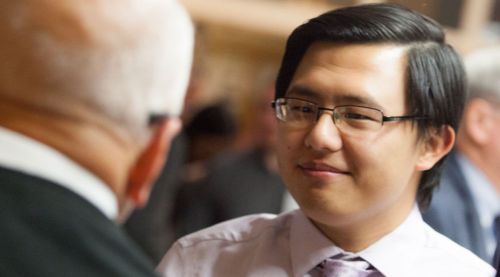
October 30–November 1, 2025 | Annapolis
February 26–28, 2026 | Santa Fe
June 11–13, 2026 | Annapolis

Trustee & Governance Chair
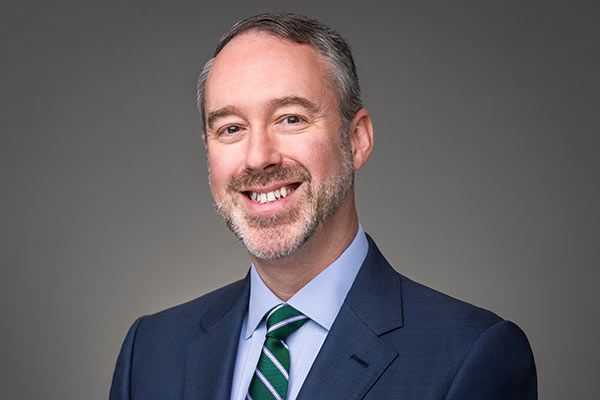



Dean of the College, Santa Fe

Audit & Compliance Chair

Enrollment Vice Chair

Trustee & Governance Vice Chair

Facilities Vice Chair

Governor of New Mexico



Alumni Association President


Audit & Compliance Vice Chair

Secretary


Finance Chair

Dean of the College, Annapolis


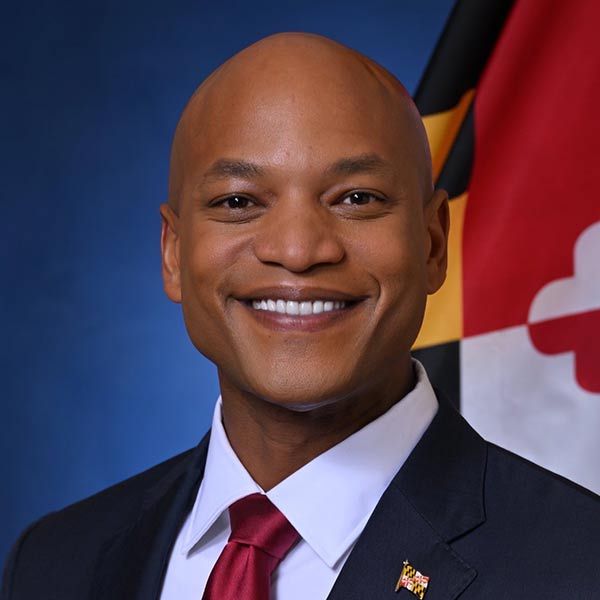
Governor of Maryland


President, Annapolis

Investment Vice Chair

Finance Vice Chair

Facilities Chair

Enrollment Chair

Advancement Chair
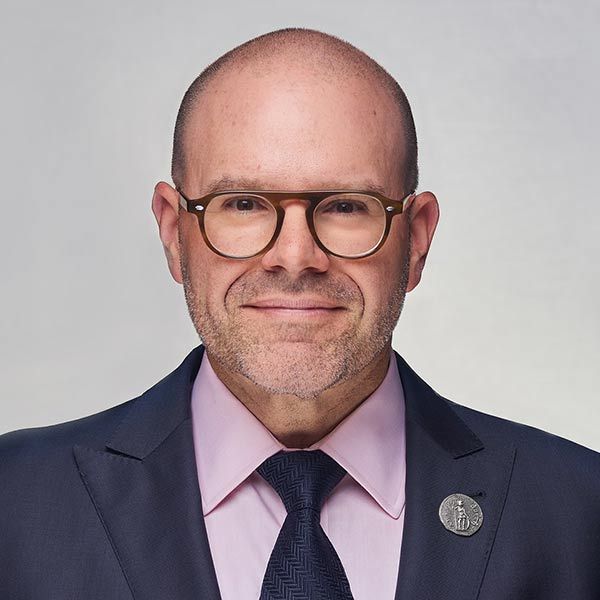
Investment Chair

Vice Chair

Visiting Chair

Chair

President, Santa Fe

Visiting Vice Chair
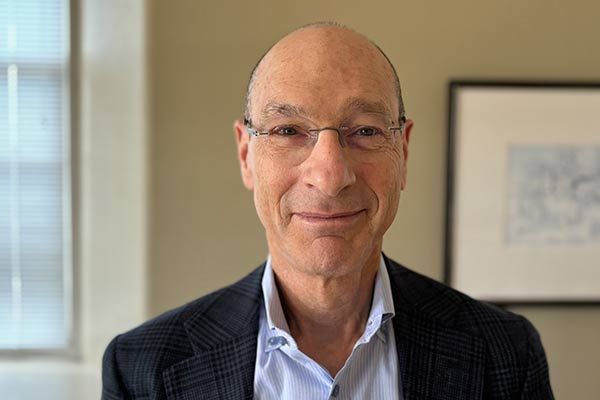
Advancement Vice Chair
Trustee & Governance Chair

Martha “Marti” Acosta (A92) joined the St. John’s Board of Visitors and Governors in 2021. She is a speaker, facilitator, and consultant with expertise in human and organizational learning. She also represents Harvard Business Publishing as a senior moderator of leadership programs for the Corporate Learning Division and is the author of Safety Capacity: Leadership Practices for Failing Safely.
Acosta has worked as a consultant for decades, representing various training and development firms and providing expertise to dozens of global corporations and government agencies. She previously led the Human Performance Improvement Team for the nuclear facilities at Los Alamos National Laboratory, where she won a Director’s Achievement Award. She has been a keynote speaker for many national and international organizations, including the American Society of Safety Professionals, Energy Safety Canada, the National Association for ESH&S Management, and the National Safety Council. She has published articles on safety leadership in professional and union publications. Acosta also serves on the board of the Los Alamos National Laboratory Foundation. She previously served as an officer on the board of Homewise.
Before joining the board, she served on the board’s task force, which focused on the college’s mission of being an “education for all” and a place where students from all backgrounds feel welcome and included. At the college, she has supported admissions, career development, and advancement in various volunteer activities.
Acosta earned a doctorate in human and organizational learning at George Washington University in Washington, D.C. She holds both a Master of Business Administration and Master of Arts from Southern Methodist University in Dallas, Texas. She is the author of Safety Capacity, Leadership Practices for Failing Safely.
She lives in Santa Fe, New Mexico.

Derek Alexander (A99) joined the St. John’s College Board of Visitors and Governors in 2025. Alexander is head of legal for Stifel Financial Corp.’s Institutional Group, one of Stifel’s two divisions. Stifel offers individuals and institutions financial services, with annual revenues of five billion dollars and half a trillion dollars in client assets under management.
Over more than a decade at Stifel, Alexander has also been responsible for Stifel’s public reporting, acquisitions, and major initiatives such as Stifel’s commercial lending partnership with Korea Investment & Securities.
Alexander volunteers as an adjunct professor of law at Cardozo School of Law. There, he teaches small groups contract drafting through classroom discussion and detailed individual responses to weekly student writing.
Alexander lives in White Plains, New York. He received a Juris Doctor degree in 2008 from Harvard Law School, where he was an editor of the Harvard Law Review. He received a Bachelor of Arts degree in 1999 from St. John’s College in Annapolis, Maryland, where he received the Roberts Prize for best senior essay.

Dino Anderson (A99) joined the Board of Visitors and Governors in 2023. He is a cultural capital architect and human resource strategist and currently serves as the chief diversity and impact officer at Articulate, a leader in digital workplace learning software, where his work centers on advancing DEI and corporate social responsibility initiatives. He has held leadership positions in organizational development, DEI, and social impact across global tech companies like Maxim Integrated (now Analog Devices), First Look Media, and Mozilla Corporation.
In addition to his corporate role, Anderson extends his expertise to academia as an instructor at Stanford Graduate School of Business and the Johns Hopkins Master of Liberal Arts program. His focus is primarily on organizational development and design, leadership, and educational equity—areas where his real-world work experience provides valuable, practical insights to his students. Anderson is an advisory board member for The Women’s Impact Alliance (formerly The Coaching Fellowship). Here, he contributes significantly to the development of young women leaders in the realm of social impact, aligning with his professional ethos of fostering inclusive and equitable environments.
His long-term partnership with Stanford’s VMware Women’s Leadership Innovation Lab has enabled him to implement evidence-based, research validated practices that help advance gender and racial equity in the workplace.
Anderson received an MA in philosophy and education at Teachers College, Columbia University.

Dr. Mark Baganz joined the St. John’s Board of Visitors and Governors in 2025. He is a corporate leader and a board-certified, fellowship-trained neuroradiologist.
Baganz is active in numerous companies, professional groups, and philanthropic organizations. He is the founder and president of Chesapeake Medical Imaging, a subspecialty patient-centric diagnostic radiology practice with multiple locations throughout Maryland. He was co-founder and is a current advisory board member of Purview, a medical IT and telehealth company, which is also the sponsor of The Horos Project, an open-source medical image viewing platform with over 100,000 users located on all seven continents and in over 170 countries. He serves on the Board of Directors of the Heart Health Foundation, a nonprofit organization committed to the early diagnosis of cardiovascular disease, and on the Board of Directors of Gibson Oncology, a pharmaceutical company developing novel therapies for difficult-to-treat cancers. He is a fellow of the American College of Radiology, a senior member of the American Society of Neuroradiology, and serves on the Maryland State Board of Physicians. He was a trustee of the Key School of Annapolis, Maryland. He is the founder and current president of the Chesapeake Medical Foundation, a charitable organization working toward health care equity and improving access to care for underserved communities.
Baganz received his BS from Denison University and his MD from Howard University. He did his postgraduate training at the Medical Center of Delaware and at the University of Maryland. He is a lecturer on magnetic resonance imaging and neuroradiology as well as on topics related to strategies to improve service delivery in the field of medicine. Prior to his current positions, Baganz served as an assistant professor of radiology and neurology at the Howard University College of Medicine.
He lives with his wife, Laurie Salladin, in Annapolis and Chestertown, Maryland. Their son August (SF20) is an alum of the college.
Dean of the College, Santa Fe

505-984-6070 | santafe.deansoffice(at)sjc.edu
Sarah Davis supervises the program of instruction on the Santa Fe campus. She received her BA in philosophy and anthropology from Harvard University and her PhD in cultural anthropology from Emory University. Prior to joining the faculty in 2012, she held positions at Time magazine in Paris and American Heritage magazine in New York. Davis is the recipient of the Condon Prize for psychological Anthropology as well as the Marjorie Shostak Prize for Excellence and Humanity in Ethnographic Writing.
Audit & Compliance Chair

Alicia Dondo (SF13) joined the St. John’s College Board of Visitors and Governors in July 2022. She is an executive director at Goldman Sachs, working in the Executive Office’s Sustainable Finance Group. Within her role, Dondo focuses on oversight of the assessment of environmental and social reputational risk for global transactions as well as progress towards Goldman Sachs’ sustainable finance commitments. She is also responsible for coordinating external engagements associated with the areas she oversees. Prior to assuming her current role, Dondo was an executive director in Global Banking and Markets Compliance.
As a St. John’s student, Dondo was a laboratory assistant, community relations assistant, and admissions office assistant. A summer internship was her introduction to Goldman Sachs. She received the Senator Millard E. Tydings Memorial Prize for Excellence in Public Speaking and the Award for Academic Excellence and Constructive Community Services. In 2011, the St. John’s faculty selected her essay on Augustine’s Confessions for honorable mention. She also received the Robert Neidorf Memorial Scholarship for Cultivation of Liberal Arts of Thinking and of Friendship.
In addition to St. John’s College, Dondo studied at Dominican Convent High School in her native Zimbabwe and at the University of Law in London.
Dondo lives in London with her husband, Hadrien, and their son.
Enrollment Vice Chair

Carla Echevarria (A96) joined the St. John’s College Board of Visitors and Governors in 2023. Echevarria is a senior UX design manager at Google (NYC), where she leads a team focused on the development of Bard, Google’s foremost AI LLM product.
Echevarria’s career is marked by significant contributions to major technology companies. Prior to her role at Google, she served as the vice president and head of design at MakerBot from 2014 to 2017, a period during which she oversaw design operations for the leading 3D printing company. At Facebook, as a design lead from 2013 to 2014, she made a notable impact by inventing and designing the Crisis Response feature, for which she holds the patent.
In addition to her corporate achievements, Echevarria is a professor of user experience design at the School of Visual Arts in New York City.
Echevarria has lectured on the topic of responsible deployment of A.I. systems at MIT, Mobile World Congress, and IP Expo Europe. Her work has garnered recognition from some of the most prestigious organizations in the design industry, including awards from the Cannes Lions, One Show, D&AD, Art Director's Club, and Webbys. Her designs have been featured in notable publications like AIGA Design 365, Creativity Review, Creativity magazine, and Communication Arts.
As a member of the board of directors for the American Institute of Graphic Artists, the professional guild for designers, Echevarria also contributed to the community of graphic designers by building partnerships with educational and cultural institutions, and creating programs to help high school students learn about design as a professional practice.
Echevarria lives in New York City with her partner and daughter.
Trustee & Governance Vice Chair

Ronald Fielding (A70) is the past chair of the St. John’s College Board of Visitors and Governors. He joined the Board in 1995 and was its chair from July 2016 to June 2023. Fielding began his career with commercial banks in Rochester from 1973-1980, rising to assistant VP and a portfolio strategist. He then began his own investment firm, managing equity and bond mutual funds, before selling the firm to OppenheimerFunds in NYC in 1996. In his final 13 years before retirement, he served OppenheimerFunds as a senior VP and oversaw the management of over $30 billion in municipal bond assets for over 1 million shareholders.
He has served on numerous corporate and nonprofit boards over 4 decades and is currently on the boards of Saturna Investment Trust and the Amana Funds (Bellingham, WA) as well as of the ICI Mutual Insurance Company (Washington, DC). He is an emeritus board member of Rochester’s Geva Theatre Center, and a past chairman of the George Eastman Museum (formerly the International Museum of Film and Photography).
In addition to his BA from St. John’s, Fielding holds an MA (1973) in economics and an MBA (1976) in finance from the University of Rochester. He has also served as an adjunct professor of economics and finance at the Rochester Institute of Technology and at the Graduate School of Management at the University of Rochester.
Facilities Vice Chair

John L. Gray (EC12) is Elizabeth McMillian Director (Emeritus) of the Smithsonian’s National Museum of American History. He joined the St. John’s Board of Visitors and Governors in 2015.
Gray was senior vice president and manager of First Interstate Bank of Denver’s Real Estate Group and executive vice president and manager of real estate for First Interstate Bank of California before being recruited to the Small Business Administration (SBA) in Washington, D.C. At the SBA from 1997 to 1999, he served as associate deputy administrator for capital access and managed the capital and credit access programs for small businesses.
He was president and CEO of the Autry National Center of the American West for 11 years before joining the National Museum of American History.
On the board, he has served on various committees and was the first chair of the Retention Subcommittee. He also is a member of St. John’s Forever and the Freeing Minds Society.
Gray earned his BA at C. W. Post Campus of Long Island University, his MBA at the University of Colorado, and his MA in Eastern Classics at St. John’s College. He was awarded an honorary doctorate from Occidental College in 2011. In addition to his service on the Board of Visitors and Governors, he has been board chair of the Cornudus Mountain Foundation in El Paso, Texas, and served on the boards of Zocalo Public Square in Los Angeles and the Exodus Dance Ensemble in Santa Fe, New Mexico.
He lives in Santa Fe, New Mexico, with his husband, Ray Landy.
Governor of New Mexico

Michelle Lujan Grisham is the thirty-second governor of the state of New Mexico and the first Democratic Hispanic woman to be elected governor in U.S. history. Her second term began in 2023.

Richard A. Groenendyke Jr. (SFGI08) joined the St. John’s College Board of Visitors and Governors in 2008.
In addition to his MA from St. John’s, Groenendyke holds a BA from the University of Alabama and a JD from the Samford University Cumberland School of Law. Upon graduation from law school, he served in the U.S. Army as an officer in the Judge Advocate General’s Corps from 1970 to 1972, including a tour in Southeast Asia during the Vietnam War.
After leaving the Army, he practiced law with several firms in Oklahoma: Shannon, Odom, Robertson & Jackson; Odom, Robertson, Groenendyke & Thompson; Groenendyke & Salter; and Hall, Estill, Hardwick, Gable, Golden & Nelson. In 1985 Groenendyke appeared on Town and Country magazine’s America’s Best 100 Trial Lawyers list.
In addition to his board service, Groenendyke is a member of St. John’s Forever and the Freeing Minds Society as well as a frequent Summer Classics attendee. He also has served on the President’s Council of the School for Advanced Research in Santa Fe, New Mexico, and is the past chair of the Harry Ransom Center Advisory Council at the University of Texas at Austin.
He and his wife, Cheryl (SFGI08), reside in Tulsa, Oklahoma, and spend summers at their home in Santa Fe, New Mexico.

Joan Haratani (SF79) joined the St. John’s College Board of Vistors and Governors in 2011. As a partner at Morgan, Lewis & Bockius LLP in San Francisco, Haratani has honed her legal skills in high-exposure cases, serving as lead counsel on some of the largest mass tort litigations. While her litigation experience spans industries, she focuses now on the banking and finance industries.
Haratani’s expertise has earned her dozens of awards and accolades including the two highest awards recognized by the American Bar Association (ABA), the Margaret Brent Award (other honorees include Ruth Bader Ginsburg and Hillary Clinton) and the highly coveted Spirit of Excellence Award. She is the fifth attorney in the nation to receive both ABA awards. The National Asian Pacific American Bar Association (NAPABA) awarded her their highest honor, the Trailblazers award.
Haratani was the first woman of color president of the Bar Association of San Franciso, president of the Asian American Bar Association of the Greater Bay Area, as well as past regional governor and board member of NAPABA. Haratani works with the board of the DC-based Asian Americans Advancing Justice and is a past board member of several philanthropic organizations, including the Leukemia and Lymphoma Society of Northern California.
At St. John’s College, Haratani brings her legal insight and her passion for social justice to the board.
Joan resides in San Francisco. She is a Team In Training Elite Athlete and is the drummer in the award-winning firm band, ROCKius, which competes annually in both the Battle of the Bands and Law Rocks, to raise money for charitable organizations. She is a proud mentor to many younger attorneys.
Alumni Association President

Brett Heavner (A89) is the president of the St. John’s College Alumni Association, and through this role, he is on the Board of Visitors and Governors as an ex officio officer.

Ginger Kenney (A67) joined the St. John’s College Board of Visitors and Governors in 2024 as an alumni-elected representative. She previously served on the BVG from 1980 to 1986. Ginger was president of the Alumni Association’s Boston chapter and served on the association’s board for many years, including one term as its secretary. She served three terms on the association’s governance committee and is also a member of the St. John’s Forever Society.
Kenney followed a long career path in software systems management and consulting, working (among other places) as a vice president of a Times Mirror software subsidiary and as a consultant at Arthur D. Little and at Cambridge Technology Partners. She is also a trustee of the Kenney Family Charitable Trust and serves on the steering committee of her neighborhood association.
After earning her BA in liberal arts from St. John’s College in Annapolis, Kenney earned her master’s degree in architecture from Harvard University. She also holds a certificate in financial planning from Boston University.
She lives in the San Francisco area with her husband Dan Kenney, a Fellow of the American Institute of Architects. With him, she coauthored the book Mission and Place: Strengthening Learning and Community through Campus Design, which has become a classic in its field. In addition, she is the author of six speculative fiction novels.
Audit & Compliance Vice Chair

Jack Kinzie (SFGI16, EC23) joined the St. John’s Board of Visitors and Governors in October 2023. He is a retired Partner of Baker Botts, LLP, an international law firm with about 700 lawyers practicing through a network of offices worldwide. He was partner in charge of the firm’s Dallas office from 1996 to 2010, was chair of the firm’s bankruptcy and insolvency practice, and served on the firm’s executive committee.
Kinzie’s engagement in the community can be seen in his service on the boards of the Greater Dallas Chamber of Commerce, the Dallas Museum of Art, and the Dallas Center for Contemporary Art. He also served as a trustee and board president of the Georgia O’Keeffe Museum in Santa Fe and now is an honorary trustee and serves as a trustee of the O'Keeffe Museum Foundation.
He is also a St. John’s College alumnus, earning a Master of Arts in Liberal Arts in 2016 and a Master of Arts in Eastern Classics in 2023.
He and his wife, Karin, divide their time between Dallas and Santa Fe, travel, and delight in their three grandsons.
Secretary

Joel Klein joined the St. John’s College Board of Visitors and Governors in 2021. He is the CEO and cofounder of Retromer Therapeutics, a biotech company dedicated to curing Alzheimer’s Disease.
Klein has held many high-level jobs in government, business, and law over the course of his career. He was chancellor of the New York City Department of Education, under Mayor Bloomberg, and ran the Antitrust Division of the U.S. Department of Justice under President Clinton. Joel served as executive vice president at Oscar Health, and at News Corporation. He was also CEO of Bertelsmann, Inc., and chairman of the board of Boston Properties, where he currently serves as a lead director. He is the author of Lessons of Hope: How to Fix Our Schools, selected by The Economist magazine as one of the Best Books of 2014.
Throughout his career, Klein has been actively involved in psychiatry and neurology. He helped create the Zuckerman Institute at Columbia University, where he currently serves as vice-chair of the advisory board. Previously, he was general counsel for the American Psychiatric Association for more than a decade, worked at the Mental Health Law Project, and was a caseworker at McLean Hospital.
Klein received a BA from Columbia University, JD from Harvard Law School, and has received nine honorary degrees. He has also received numerous awards and recognitions, including the Alexander Hamilton Award from Columbia College, the Lewis Rudin Award from New York University, and the Manhattan Institute’s Hamilton Award. He was chosen by Time magazine as one of nine People who Mattered (runners up to Person of the Year) in 1999 and by as “One of America’s 20 Best Leaders” in 2006.
He is married to Nicole Seligman and has one daughter, Julia (SF08).

Thomas R. Krause (SFGI01) joined the St. John’s Board of Visitors and Governors in 2001. He is the CEO and cofounder of Krause Bell Group, a consultancy based in Ojai, California. He previously founded Behavioral Science Technology, which was sold in 2012. Both consultancies have provided assessment and intervention strategy advice to organizations that want to improve leadership’s ability to create a positive culture.
Krause attended the St. John’s Graduate Institute in Santa Fe 20 years after having completed graduate work in experimental psychology and a doctoral degree in clinical psychology. He is a member of the board of Thomas Aquinas College. He founded the Agora Foundation in 2000 offering community-based seminars on classic texts. In 2003 he founded the Ojai Chautauqua, offering panel discussions on controversial topics of current interest.
Krause is a global leader in organizational safety, having written six books and more than 30 articles on safety leadership. In 2004 he led a consulting team to support NASA following the Space Shuttle Columbia disaster. He has consulted widely with senior executives across countries and industries.
At St. John’s, Krause has chaired the Visiting, Polity Review, Enrollment, and Governance committees. He led the governance restructuring initiative and the tuition reset and has mentored students on making the transition from college to work life.
Krause lives in Ojai, California, and Santa Fe, New Mexico. He and his wife, Cathryn, have four children, 10 grandchildren, and three great-grandchildren. His son Jared (SF06) and grandchildren Molly and Robert attended seminars St. John’s Santa Fe.
Finance Chair

Richard Lincer joined the St. John’s Board of Visitors and Governors in 2019. He is a senior counsel at the international law firm Cleary Gottlieb Steen & Hamilton LLP, based in the New York office. He joined the firm in 1979 and became a partner in 1986. Prior to joining the firm, he served as law clerk to Judge Eugene H. Nickerson in the U.S. District Court for the Eastern District of New York.
His practice has spanned corporate and financial matters, including international project financings and debt restructurings, corporate and asset acquisitions, joint ventures, and high-yield and leveraged finance transactions, as well as regulation of investment funds and investment advisers.
He was the senior resident partner in the firm’s Hong Kong office in 1998 and 1999 where he worked on the $80 billion restructuring of the Daewoo Group and the acquisition by Newbridge Capital of Korea First Bank from the KDIC.
Other notable matters on which he has played a leading role include:
Representation of the UAW in connection with the bankruptcies of Chrysler and General Motors and the funding arrangements for their retiree healthcare benefit obligations;
Highstar Capital and its portfolio company Ports America in its more than $1 billion investments in the Seagirt Marine Terminal in the Port of Baltimore and Port Newark Container Terminal in the Port of New York and New Jersey;
The public-private partnership to operate the Luis Munoz Marin International Airport in San Juan, Puerto Rico–the only major U.S. airport to be run by a private operator under the FAA’s Pilot Privatization Program; and
Substantial work with cogeneration and other electrical power projects, industrial facilities such as pulp and paper mills and methanol plants, and infrastructure projects including the groundbreaking international capital markets financings for Mexican and Chilean toll roads.
Lincer holds a JD from Columbia Law School (1978), where he was a Harlan Fiske Stone Scholar and notes and comments editor of the Columbia Law Review. He earned his undergraduate degree from Yale College (1975), where he completed dual majors in political science and biology.
Lincer previously served as a trustee of the Cooper Union for the Advancement of Science and Art and was chairman of Cooper’s board of trustees from 2013 to 2016. He was honored to receive the Thurgood Marshall Legacy Award in 2017 from the Thurgood Marshall College Fund.
At St. John’s, Lincer is a member of the Freeing Minds Society and St. John’s Forever.
He lives in Short Hills, New Jersey, with his wife, Ellen. His son, David Lincer (A15), is an alum.
Dean of the College, Annapolis

410-626-2511 | annapolis.deansoffice(at)sjc.edu
Joseph "Joe" Macfarland (A87) supervises the program of instruction on the Annapolis campus as the interim dean. He received his doctorate from the Committee on Social Thought at the University of Chicago, and he was a Fulbright scholar in Bologna, Italy, studying medieval political theory. He has been teaching at St. John's since 1998 and has previously served as both dean and interim president.

Peter Marber joined the St. John’s College Board of Visitors and Governors in 2018. An award-winning money manager for some of the world’s largest institutions including HSBC and Loomis Sayles, he currently is managing director at Global Evolution, a specialized asset management company focused on emerging and frontier markets.
A thought leader on globalization and economic development, Marber has studied how countries and their markets evolve for more than three decades. He has passed along his curiosity, knowledge, and passion as a professor at New York University, Johns Hopkins, Harvard, and Columbia, as well as through his academic and popular writings. His eighth book, Augmented Education in the Global Age: Artificial Intelligence and the Future of Learning and Work, was published in 2023.
In addition to his service on the St. John’s College Board of Visitors and Governors, Marber serves or has served on various boards for Columbia University, Johns Hopkins University, the Emerging Markets Trade Association, Geolinks, New America, the World Policy Institute, and others.
He earned his BA at Johns Hopkins, master’s degrees from Columbia and Oxford, and his PhD from the University of Cambridge. In addition to being a fellow of both the Royal Society of Arts and the Royal Astronomical Society, Marber is a member of Chatham House, the Royal Economic Society, and the Bretton Woods Committee, among other organizations.
He lives in New York City with his wife, Andrea Marber.

Rob Mass (H20) joined the St. John’s College Board of Visitors and Governors in 2013.
Mass is a retired participating managing director of Goldman Sachs, where he worked from 1992 to 2020, exclusively in the compliance department. He is now an adjunct faculty member at Hunter College, where he teaches ethics and moral judgement, political philosophy and business ethics, within the department of philosophy. Prior to joining Goldman Sachs, he was an assistant district attorney in New York County, where he investigated and prosecuted street crime, the Mafia (including Tommy Gambino and John Gotti) and police corruption. Prior to that, he was a lawyer for the New York law firm of Kramer, Levin, Nessen, Kamin and Frankel and for the American Civil Liberties Union.
On the board, he has served as a member of the Campus Culture Committee and the Diversity and Inclusion Task Force.
Mass earned his AB at the University of California Santa Cruz and his JD from Harvard Law School. He is currently a PhD candidate in philosophy at The New School. He was named honorary alumnus of St. John’s in 2020.
In addition to his service on the board, he is a member of the board of directors of The Mussar Institute, which focuses on Jewish ethics, and an adviser to a variety of tech startups. He is the author of “A Banker’s Code of Ethics” (Oxford Review of Economic Policy, Summer 2017).
Mass lives in New York with his wife, Dr. Anne Mass.
Governor of Maryland

Wes Moore is the 63rd Governor of the state of Maryland. He is Maryland’s first Black Governor in the state’s 246-year history, and is just the third African American elected Governor in the history of the United States.

Kelsey (Hennegen) Murray (SFGI20, EC21) joined the St. John’s College Board of Visitors and Governors in 2023. Her career began in startups, first Graphiq (acquired by Amazon in 2017) and then Lever (acquired by Employ in 2022). After six years in the tech industry, she left Silicon Valley to study at St. John’s College in Santa Fe.
Her poetry has received recognition, including first place in Narrative magazine’s "30 Below" contest for writers under the age of 30 and an artist's residency with the Historic Santa Fe Foundation. Her published works include a poetry chapbook entitled To Keep the Name Daughter and a book of translations of the Argentine poet Camila Evia's work.
Murray also holds an MA in English from Middlebury’s Bread Loaf School of English and an MFA in Poetry from Boise State University, where she taught undergraduate poetry courses.
n 2023, she married fellow Johnnie, Patrick Murray (SF20) and they welcomed their first child in 2024. She now oversees the fellowship program of a nonprofit economic policy think tank in Washington, D.C.
President, Annapolis

410-626-2510 | annapolis.president(at)sjc.edu
Susan “Suzy” Paalman currently serves as the interim Annapolis campus president. She received her BA in biology and biochemistry from Rice University and her PhD in biophysics and biophysical chemistry from Johns Hopkins University School of Medicine. She has been teaching at St. John’s since 1997 and has previously served as dean, assistant dean, and chair of the Hodson Group on readings in biology.
Investment Vice Chair

Karen Pritzker joined the St. John’s College Board of Visitors and Governors in 2020.
As the daughter of a U.S. Foreign Service officer, Pritzker attended French schools in Martinique, Liberia, Haiti, and France. She passed the first part of the French Baccalaureate examination before returning to the United States and attending Miss Hall’s School, Tufts University, and earning a BA from the University of Chicago.
After working in the accounting department of the Hyatt Regency Chicago, she became a graphic designer at McCall’s magazine and a freelance photographer and graphic designer. She pursued non-degreed BFA coursework in painting and drawing at the Art Institute of Chicago.
In 1989, Pritzker turned her attention to raising her five children and volunteer service. In addition to her work with the St. John’s board, she is the co-chair of the board for Providence St. Mel School in Chicago, and a member of the Tufts University Board of Trustees. She is a founding member of the board of trustees of the Jay Pritzker Academy Cambodia. She is also a member of the Freeing Minds Society.
She lives in Kentfield, California, with her husband, Dan Pritzker. Their son Jon (A20) is an alum.
Finance Vice Chair

Daniel Raizen (SF79) began his term on the Board of Visitors and Governors in 2023. He brings a wealth of experience from his career as a software engineer, where he specialized in operating systems, network programming, security, and database design.
Transitioning into education, Raizen made significant contributions at the Waldorf High School of Massachusetts Bay from 2004 to 2018. There he taught high school math across all levels as well as chemistry and computer programming. He was instrumental in developing the school’s math curriculum. In retirement, Raizen has stayed actively involved in education, tutoring prisoners in science for their high school equivalency program, assisting young students with reading literacy, and tutoring high school students in math.
Raizen currently serves on the Mount Auburn Hospital Board of Advisors and on the board of the Carol K. Engler Foundation. In the past, he served on the board of the Waldorf School of Lexington, including terms as vice president and president, and he was the treasurer at the Waldorf High School of Massachusetts Bay. He has also served as the vice president of development for Temple Shir Tikvah.
At St. John’s College, he established the Raizen Family Mental Health Endowment Fund and the Teresa Raizen Scholarship Fund, in memory of his late spouse.
In addition to his BA from St. John’s College, Raizen holds an MS in computer science from Illinois Institute of Technology. His expertise and philanthropic endeavors reflect his deep commitment to education and community development. He lives in Cambridge, Massachusetts, and is the father of three children, two of whom are graduates of the college.
Facilities Chair

Zach Rasmuson (A95) joined the St. John’s College Board of Visitors and Governors in 2022. He has served as executive vice president and chief operations officer of The Duckhorn Portfolio, one of the North America’s preeminent luxury wine brands, since 2012. He joined The Duckhorn Portfolio in 2003 as the winemaker and general manager for Goldeneye wines after a career that included work at notable wineries such as Stag’s Leap Wine Cellars founded by board emeritus member Warren Winiarski (Class of 1952), Robert Sinskey Vineyards, and Husch Vineyards.
Rasmuson’s vision and experience have helped to guide the evolution of the company’s world-class estate program that spans Napa Valley, Paso Robles, Mt. Harlan, Anderson Valley, Sonoma County, and Red Mountain in Washington State. Under his stewardship, Goldeneye was one of the first wineries to earn the Certified California Sustainable Winegrowing distinction from the California Sustainable Winegrowing Alliance. Rasmuson also spearheaded the building of Goldeneye’s state-of-the-art pinot noir winemaking facility, which was only the second in California to achieve LEED Gold certification. A master winemaker in his own right, Rasmuson works closely with the winemaking team to oversee every aspect of production, including winemaking, grower relations and an estate program. Zach also works alongside the executive team to chart the future of the company, implementing initiatives for strategic and sustainable growth.
Beyond Goldeneye, he played a key role in a pioneering program to build farm worker housing on winery land. He also served as the vice president of the Anderson Valley Winegrowers Association.
Rasmuson lives in Sebastopol, California, with his wife, Michelle Sitton.
Enrollment Chair

Andy Reeher joined the St. John’s College Board of Visitors and Governors in 2022. He is the CEO of Brighton Science, a solutions-focused company that has mastered the ability to ensure adhesion for manufacturers in an ever-growing array of industry applications.
Reeher's career theme has been applied analytics in consumer and organizational behavior, with his recent work in process improvement in the use of advanced materials in manufacturing. Prior to Brighton Science, he was the founder and CEO of Reeher LLC, a software-as-a-service corporation used by colleges and universities to improve fundraising performance. In May 2018, the company was acquired by Blackbaud, a global leader in fundraising and advancement technology, and he became its head of data intelligence.
Reeher holds a BA from Grove City College and an MBA from the University of Chicago.
He lives in St. Paul, Minnesota, with his wife, Ellen. His daughter Mary (A15) and son James (A25) are alumni of the college.
Advancement Chair

Kenneth S. Resnick (SFGI19, EC23) joined the St. John’s College Board of Visitors and Governors in 2019. He is also a graduate of Miami University (1977) and the University of Georgia School of Law (1981).
Resnick became a partner at the Cincinnati-based law firm of Dinsmore & Shohl, practicing civil and criminal law. He also served by appointment of the attorney general as a special prosecutor for the state of Ohio from 1985-1990. Resnick’s experience at the firm included the successful pro bono representation of a death-row inmate before the U.S. Supreme Court Clemons v. Mississippi, 110 S. Ct. 1441 (1990).
Resnick served as a trustee and past president of the board of the Legal Aid Society of Southwest Ohio.
He joined the General Electric Company (GE) in 1993 and later became a GE corporate vice president and general counsel for the then-GE Oil and Gas business, headquartered in Florence, Italy.
Throughout his career, Resnick has been engaged with higher education, teaching courses on international business ethics, governance, and regulatory compliance at Xavier University and Syracuse University in Florence, Italy.
In 2014, upon retirement from GE, Mr. Resnick launched ATRQ Global LLC, a consulting firm focused on regulatory compliance, business ethics, and corporate governance. Clients include multinational and private equity companies in Europe, Asia, the Middle East, and the United States.
Resnick serves as a member of Santa Fe’s Economic Development Advisory Board and is a licensed K-12 substitute teacher in New Mexico.
Resnick lives in Santa Fe, New Mexico, with his wife, Elisabeth. They have two daughters.
Investment Chair

Joshua D. Rogers (A98) joined the St. John’s Board of Visitors and Governors in 2014. He is the CEO and founder of Arete Wealth Inc., which he founded in 2007. Based in Chicago, Arete Wealth provides investment products and services in more than 100 offices nationwide and is one of the 25 largest independent broker-dealer/registered investment advisory firms in the United States.
After his graduation from St. John’s, Rogers was set to pursue a career in law but instead joined Walker Digital, an e-commerce startup in Stamford, Connecticut. Along with the company founder, he co-invented several patents, including the “name your own price” patents behind Priceline.com. He later joined American Express Financial Advisors (now Ameriprise Financial).
In 2015, Rogers was elected to the Financial Industry Regulatory Authority’s National Adjudicatory Council to represent the 3,600 broker-dealers across the country. He has also served on the Board of the Chicago chapter of the Young Presidents’ Organization (YPO), the Board of Illinois Humanities, and is currently a member of the Economic Club of Chicago and an Elected Trustee of the Museum of Contemporary Art Chicago.
At St. John’s, he has taught entrepreneurship classes on both campuses.
Rogers lives in Chicago and Miami Beach. He is the father of three children, Camille, Jackson, and Ace. He married Megan Green in September 2022.
Vice Chair

Pamela Saunders-Albin (H15) joined the St. John’s Board of Visitors and Governors in 1999 and has served as its vice-chair.
Born and raised in Boston, Saunders-Albin graduated from Harvard College and the Stanford Graduate School of Business. She spent several years in investment banking at Goldman Sachs in New York City, then joined her family’s real estate investment firm before moving to Santa Fe, New Mexico in 1997. Her longtime interest in education led to her getting her teacher’s license and homeschooling her son Ben as well as tutoring other students.
Currently serving on the board’s Executive Committee and the Facilities and Deficit Reduction subcommittees, Saunders-Albin is also active in a variety of other organizations and causes. She serves as a trustee of the International Rescue Committee and the New Mexico School for the Arts and is a founding investor of the Goldman Sachs Social Impact Fund and a principal of Saunders Real Estate in Boston.
She lives in Santa Fe, New Mexico.
Visiting Chair

Sarah Smart (A95) joined the St. John’s College Board of Visitors and Governors in 2021. She is a co-founder of Horizon Human, a Strategic HR Consultancy. Prior to founding her own firm, Sarah served as managing director and product leader for talent acquisition at JPMorgan Chase. Her previous roles at JPMorgan include serving as the head of consumer and community bank and firmwide operations recruitment.
Prior to joining JPMorgan Chase in 2021, Smart was vice president for global recruitment at Hilton; associate director for global leadership recruitment at Accenture; Hilton’s director of executive recruitment and sourcing; and held similar positions in executive recruitment at Freddie Mac, Russell Reynolds, Heidrick & Struggles, and JPMorgan Partners.
In addition to her St. John’s BA, Smart holds an MA in organizational behavior studies from Columbia University.
She is also a member of the Freeing Minds Society and has participated in an admitted students alumni panel in Annapolis.
Chair

Warren Spector (A81) joined the St. John’s College Board of Visitors and Governors in 1992. He is chairman of Balbec Capital LP, a global private investment firm specializing in private credit. Founded in 2010, Balbec Capital has deployed over $20 billion globally.
Prior to joining Balbec Capital, Spector spent 24 years at Bear Stearns Companies. He joined the mortgage department in 1983 when its revenues were less than $1 million per annum and grew that business to more than $2 billion. In 1993, he started the global derivatives department and grew that business to more than $1 billion. He joined the Management Committee in 1990, the Executive Committee in 1993, and served as president from 2001 to 2007.
Spector is chairman emeritus of The Public Theater in New York, having served as chairman from 2005 to 2013. He chaired the $42 million capital campaign to rebuild the Joseph Papp Public Theater, the $50 million capital campaign to build the Martha’s Vineyard Hospital, and St. John’s $300 million Freeing Minds campaign. He also serves on the board of New York Public Radio and the Jewish Federation of Palm Beach and is a member of the Council on Foreign Relations.
On the St. John’s College Board of Visitors and Governors, Spector serves as chair of the board and chair of the Executive Committee. In addition to his St. John’s BA, Spector holds an MBA from the University of Chicago.
He lives in New York City with his wife, Abigail, and daughter, Georgia.
President, Santa Fe

505-984-6098 | santafe.president(at)sjc.edu
J. Walter Sterling (A93) became the eighth president of the Santa Fe campus in July 2024 and was appointed interim college president in June 2025. He has been a member of the teaching faculty since 2003 and served nine years as campus dean. Over the course of his career, he has been a staunch defender of St. John’s model of liberal education and has led efforts to make it more accessible to many more students from all walks of life. Sterling holds a BA from St. John’s Annapolis, an MA in philosophy from Emory University, and an MBA from the University of Notre Dame.
Visiting Vice Chair

Before coming to St. John’s College’s Graduate Institute to study liberal arts in Annapolis and Eastern Classics in Santa Fe, Ambassador (ret) Marc Wall (AGI17, EC21) was a diplomat and college teacher.
A United States Foreign Service for over thirty years, Wall served as ambassador to Chad and coordinated economic programs in Iraq. In Asia, he negotiated trade agreements with China and Taiwan, assisted in the response to the Fukushima nuclear emergency in Japan, participated in launching the Asia Pacific Economic Cooperation forum, and advised the U.S. military’s Pacific headquarters in Hawaii. He held various positions in the Department of State in Washington, DC, including as a member of the Secretary of State’s Policy Planning Staff. Earlier in his career he helped open the U.S. embassy in Zimbabwe.
Wall has taught at Georgetown University, the City College of New York, the National Defense University, the University of Wyoming, and George Washington University’s program for international studies in Asia. He has an undergraduate degree in history from Princeton University and a graduate degree in international affairs from Columbia University.
Wall is a member of various boards and study groups. He is married to the former Alice Trinh. His family includes two children and two grandchildren. He divides his time between his farm in rural Maryland and apartment in Honolulu.
Advancement Vice Chair

David Wippman joined the St. John’s College Board of Visitors and Governors in 2024. He is President Emeritus of Hamilton College, which he led from 2016 to 2024, and then served as a president-in-residence at the Harvard Graduate School of Education. He writes frequent essays and op-eds on issues affecting higher education.
Before starting at Hamilton, he served as Dean of the University of Minnesota Law School and Vice Provost for International Relations at Cornell University.
Wippman is a recognized authority in international law and has taught and written extensively about public international law, human rights, the law of war, and ethnic conflict. In 1998-99, he served as a director in the National Security Council’s Office of Multilateral and Humanitarian Affairs, where he worked on war crimes issues, the International Criminal Court, economic sanctions, and U.N. political issues.
Wippman practiced law for nine years in Washington, D.C., with a focus on international arbitration, political consulting on public and private international law issues, and representation of developing countries in litigation in U.S. courts.
In 2019, he was named to the Advisory Council of Refugees International, and in 2021, the Commission on Independent Colleges and Universities elected him to a three-year term to represent the interests of New York’s independent colleges and universities.
He lives in Bethesda, Maryland.
Sharon Bishop (A65)
Steve Bohlin (SF81)
Gregory D. Curtis (H02)
Stephen L. Feinberg (H96)
Stephen J. Forman (A70)
Leslie Jump (A84)
Perry A. Lerner
Harriet H. Warren (H89)
Julia M. Wilkinson (H94, AGI96)
Delores Wolf (H17)
M. Brownell Anderson (H98)
Jill Cooper (H14)
Anna E. Greenberg (H96)
Allan P. Hoffman (A49)

October 30–November 1, 2025 | Annapolis
February 26–28, 2026 | Santa Fe
June 11–13, 2026 | Annapolis






President Emeritus




Alumni Association Past President
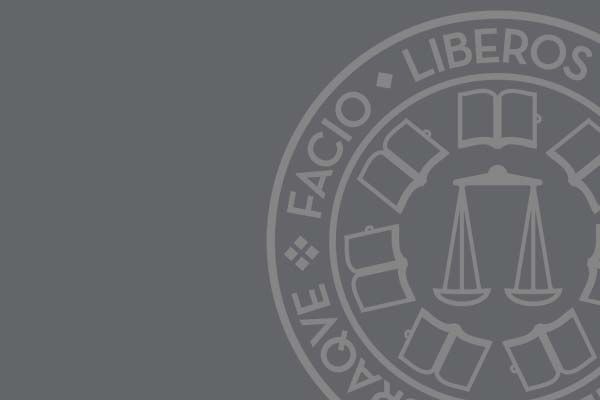

Steven Bohlin (SF81) joined the St. John’s College Board of Visitors and Governors in 2010. Bohlin is a retired managing director of Thornburg Investment Management in Santa Fe, New Mexico.
He joined Thornburg as an associate in 1984 and rose steadily through the ranks to vice president in 1988 and managing director in 1991. He published and was quoted in myriad articles about investing and frequently spoke and served on panels at industry trade shows for fixed income.
Bohlin was also a member and chair of the School for Advanced Research Board of Managers and a member of the New Mexico State Treasurer’s Investment Committee.
He lives in Santa Fe with his wife, Rachel O’Keefe (AN81). They have three daughters, including Darcy Bohlin (A20).

Nora Demleitner became the 25th president of the Annapolis campus in January 2022 and assumed collegewide duties for St. John’s in July 2024. An expert on criminal justice issues, including sentencing guidelines, she was dean of the law schools at Washington & Lee and Hofstra University before bringing her ample experience in academic and institutional leadership to the college. She received her BA from Bates College, her JD from Yale, and her LLM from Georgetown in international and comparative law.

Austin Ligon joined the St. John’s College Board of Visitors and Governors in 2010.
Ligon is an individual angel/seed-stage investor and advisor in hybrid (web and physical) retail, service, and educational businesses. The list of companies in which he has invested and where he was a board advisor includes Gazelle, SureAuto (Beijing), PhotoButler, Hitch, Redfin, Rev, CarTrade Tech (India), Ubongo, Tazza Kitchen, DifferentFunds, and Eneza Education.
He was cofounder, president, and CEO of CarMax (1991 to 2006), senior vice president of strategy/automotive at Circuit City (1990 to 1995), and vice president for family restaurants and senior vice president for hotel strategy with Marriott International (1984 to 1990).
In addition to his service on the Board of Visitors and Governors, Ligon is a Yale School of Management board member. He has been a member of the boards of the University of Virginia; UVIMCO, the governing board for the University of Virginia Investment Management Company; the Johns Hopkins Center for Talented Youth; and the Association of Governing Boards of Universities and Colleges.
Ligon holds a BA and MA in economics from the University of Texas at Austin and an MBA from the Yale School of Management. He lives in Austin, Texas, and Tiburon, California.

Tia Pausic (A86) became an elected alumni representative to the St. John’s Board of Visitors and Governors in October 2022. Pausic is an accomplished legal professional and experienced leader in the international humanitarian sector. She currently holds the position of general counsel at International Medical Corps, a role she has held since December 2018. In this capacity, Pausic leads the Legal and Grants & Contracts departments, offering strategic legal and governance advice to the CEO and Board of Trustees. Her responsibilities extend across more than 25 country field offices, where she oversees legal and regulatory matters.
Prior to her current role, Pausic served as acting general counsel and as senior director, Awards and Measurement at International Medical Corps. Her career also includes significant leadership positions at World Learning and America's Development Foundation, where she was responsible for strategic planning, legal and regulatory compliance, and operational management in various international contexts.
Pausic holds a JD from Harvard Law School and a Bachelor of Arts in Philosophy & Mathematics from St. John's College, providing a strong foundation in critical thinking and analytical skills.
Her multifaceted experience in law, international operations, and humanitarian work, combined with her academic achievements, make Pausic a valuable asset to the St. John’s College board.
Pausic lives in Washington, DC with two demanding Maine Coon cats and focuses her creative energy on designing jewelry and growing irises.

Elizabeth Powers (A89) joined the St. John’s College Board of Visitors and Governors in 2019. She is vice president and general manager for regulatory science and study innovation at IQVIA, a global provider of advanced analytics, technology solutions, and clinical research services to the life sciences industry.
She has served as editor-in-chief of the company’s publication AccessPoint and has written or cowritten many articles, including “The Secrets to Successful Strategy Execution” (Harvard Business Review).
Prior to joining IQVIA, Powers was a partner at Booz & Company. Earlier in her career, she served as executive director of a number of nonprofit modern dance companies in New York City. She is the recipient of a Hammer Award for Reinventing Government, Booz Allen Hamilton’s Professional Excellence Award, and IQVIA’s Innovator of the Year Award.
She is a member of the Freeing Minds Society and received the Alumni Association’s ALFie Award for innovative, forward-looking, or extraordinary volunteer service.
Powers holds an MBA from the Wharton School of the University of Pennsylvania.
Powers lives in Brooklyn, New York, with her husband, Andy Wagner. They are the parents of one child, Spencer, now attending Reed College.
President Emeritus

Mark Roosevelt became the seventh president of the Santa Fe campus in January 2016 and assumed collegewide duties for St. John’s in July 2016. He brings a history of accomplishing daunting tasks and a lifelong commitment to educational quality and equity. He earned his undergraduate and law degrees at Harvard University.

Sarah Shepherd (SF05) became an elected alumni representative to the St. John’s Board of Visitors and Governors in 2018. She is founder and president of Circuit Rider of Colorado, a consulting firm that serves as management to numerous Title 32 Colorado special districts.
As president of Circuit Rider of Colorado, she educates other professionals in local government management, elections, and natural resource regeneration and oversees government elections, bond financing, construction and capital improvement projects, and operations in water and sanitation, hospital, fire, metropolitan, and parks and recreation. She also advises a variety of nonprofit associations.
In 2009, Shepherd cofounded IMPACT Personal Safety of Colorado and served as its executive director from 2009 to 2017. She currently presides over IMPACT’s board. She also has served as an officer and member for IMPACT International, a group of 15 nongovernmental and nonprofit organizations; chair of the board of Colorado Coalition Against Sexual Assault; EIDA and board consultant to ESD Global/Violence Prevention Educators International; and member of the board of the Institute of Transactional Philosophy.
As a student, Shepherd received the Student Activities Award in 2005 and worked, among other roles, as Student Activities Center outdoor activities supervisor, resident advisor, and assistant to the assistant dean.
She also mentors students in the Jobs4Johnnies program and works with Career Development staff to help connect students with summer internships and with scholarship funds for further study in philosophy, nonprofits, environmental resources/sciences, and government/nonprofit management.

Adrian Trevisan (A84) joined the St. John’s Board of Visitors and Governors in 2015. He is a historic preservationist and leads the board’s College History Task Force.
Trevisan works for Powers & Company as an architectural historian managing historic tax credit projects. Prior to this he worked as an independent consultant writing nominations for the National Register of Historic Places and the Philadelphia Register of Historic Places.
Before starting his second career in historic preservation, Trevisan invested in startups as a member of Robin Hood Ventures, helped companies ranging from Big Pharma to small biotech as a management consultant, and managed marketing and sales in Eastern Europe for an Italian family-owned pharmaceutical company immediately following the fall of the Iron Curtain.
Before joining the board, he served on the board of the St. John’s College Alumni Association working to increase alumni engagement with the college. He led its Career Services Working Group and then served as its president. In 2012, he and a classmate sponsored a contest for the best modern arrangement of the college’s fight song, “St. John’s Forever,” contributing a cash prize of $1,696.
In addition to his degree from St. John’s, he holds an MA in international relations and international economics from Johns Hopkins University’s School of Advanced International Studies, and an MS in historic preservation from the University of Pennsylvania. In what might be considered nontraditional education, he also served as an enlisted parachute infantryman in the U.S. Army’s 82nd Airborne Division.
Trevisan lives in central New Jersey with his wife, Anne.

Johanna Wilson (A90) joined the St. John’s College Board of Visitors and Governors in 2019.
Having written her senior essay on the pre-Socratic philosopher Plotinus, she is comfortable balancing the abstract with the concrete. Her St. John’s education has served her well throughout her entrepreneurial adventures.
After graduation, Wilson joined a local Annapolis technology startup, where she learned firsthand the importance of wearing multiple hats. From pulling fiber-optic cable to UNIX administration to starting a commercial software division, Wilson seized every opportunity to learn new skills, spot trends, and anticipate industry needs.
Wilson holds multiple patents in wireless technology, including innovative concepts that were harbingers of early internet and mobile integration. Her inventions introduced methods of bridging wireless SS7 data with IP protocols, enabling now-common tasks like sending emails to and from text messages and integrating text messaging with internet chat protocols.
In 2001, predicting that cell phones could soon run local applications for gaming, business, and finance, Wilson co-founded OpenPath Products as one of the world’s first mobile app development companies. Since then, her company has delivered thousands of applications for hundreds of companies in the entertainment, finance, pharmacy, and internet-of-things markets.
In addition to spotting trends and taking risks, Wilson attributes her company’s success to its extraordinary team. According to Wilson, “I look for strong communication skills, logical thinking, and the ability to learn. Technologies will change, so the ability to adapt and influence is essential for growth.” She attributes much of her company’s success to those values she learned at St. John’s: the importance of questioning assumptions, perceiving patterns, civil discourse, and respect for others.
It is therefore no surprise that Wilson has employed more than 50 Johnnies over the years: “St. John’s teaches students to be critical thinkers, thoughtful communicators, and well-balanced humans. This is an asset to any company and community.”
In addition to guiding her company and mentoring her team, Wilson strives to give back to the wider community through the support of charities and organizations.
Alumni Association Past President

Katarina Wong (A88) is the past president of the St. John’s College Alumni Association.
In addition to being a writer and internationally exhibited artist, Wong is a spiritual facilitator working with clients to deepen their relationship to the sacred, however they define that. She has worked in nonprofit, private, and academic sectors, including as the associate director of fellowships at The OpEd Project and as the program manager of the arts administration program at Columbia University. She also has deep experience in strategic communications, having worked as the director vice president of community engagement at Edelman, the global public relations agency.
After graduating from St. John’s, Wong received her Master of Theological Studies in world religions, focusing on Buddhism, from Harvard Divinity School and an MFA in visual arts from the University of Maryland, College Park. She is currently studying psychedelic-assisted therapy at Naropa University to deepen her practice as a spiritual facilitator.
Wong lives with her partner, Mark, who is attending the Graduate Institute, and their blended dog family. They split their time between Santa Fe and Phoenix.

Delores Wolf (H17) joined the St. John’s College Board of Visitors and Governors in 2007.
Wolf has served on numerous school committees, including the Presidential Search Committee. She also chaired the Trustee and Governance Committee for several years and has been a member of the Campaign and Retention committees. She is a member of the Freeing Minds Society.
Wolf’s corporate career was in human resources for a Fortune 500 company in New York City, later relocated to Dallas/Ft. Worth. She was responsible for its full HR function, including policy and procedures for more than 65,000 employees worldwide. She was also the first woman vice- president/corporate officer at the company. Her early career was in advertising, where she worked as a stylist and copywriter. She holds a BA in Interdisciplinary Studies. and has served as a speaker and writer for various industry groups and professional organizations.
More recently, she has devoted her time to restoring period homes and designing interiors in Washington, DC and France. She lives in Palm Beach, Florida, with her husband, Stephen.